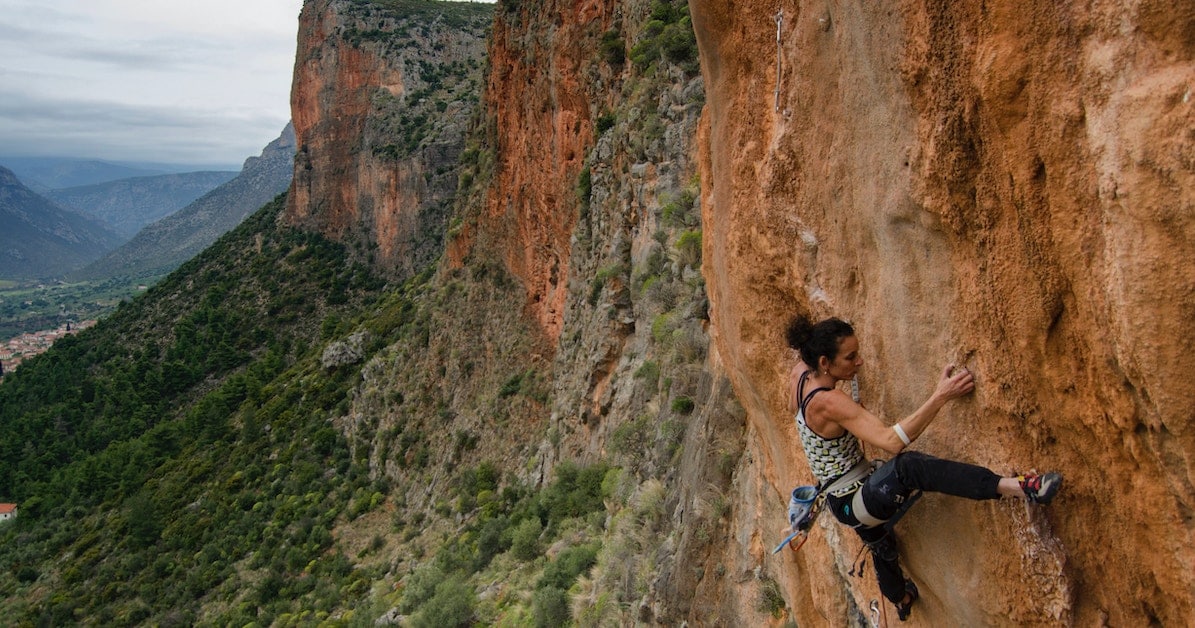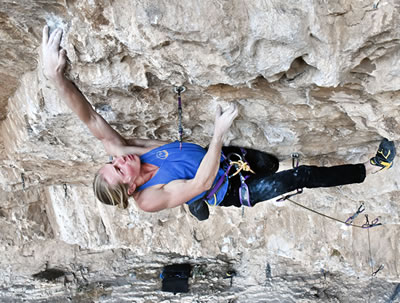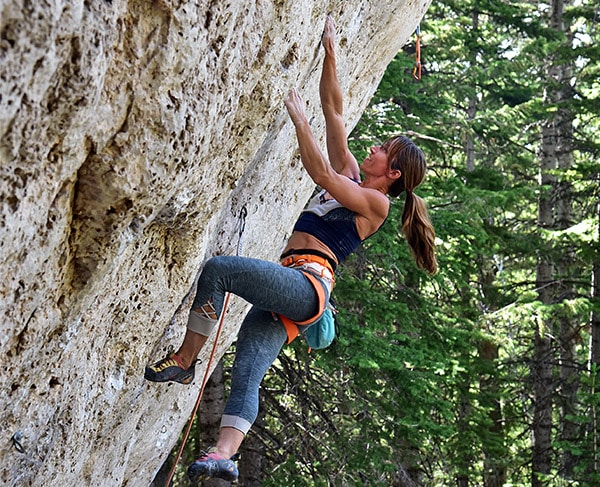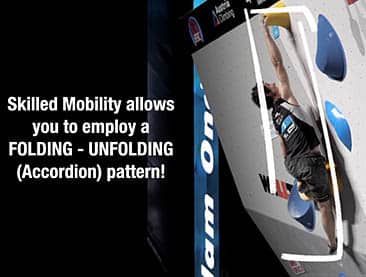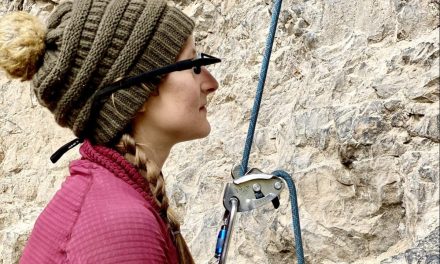Think beyond your toes and learn to use your whole foot as a climber. Heel-hook and toe-hook techniques open up a whole new way to move on the wall.
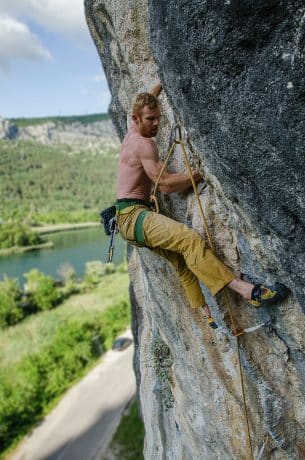
Heel-hooks and toe-hooks help keep your body close to the wall, and free up your hands for upward movement.
Do your climbing technique a favor by learning to use your entire foot—not only the tips of your toes! There’s a reason that modern climbing shoes feature rubber not just underfoot, but wrapping all the way around the heel and over the forefoot (and it’s not just for the sake of a higher price tag). Utilizing these areas unlocks a whole new side of climbing.
Heel-hook and toe-hook techniques make climbing more creative and accessible. Short climbers that struggle to make long reaches, for example, can use their heel like a third hand to raise their center of gravity on the wall. A toe-hook can prevent a barn-door swing from yanking you right off the rock. Both can take precious weight off of your arms to give you a better chance of warding off the pump all the way to the chains.
Heel-Hook Technique
A proper heel-hook will demand more from your hamstring and calf than your actual heel. Practice the motion off the wall by performing a Swiss Ball Hamstring Curl. Lie on your back and place your heels up on a stability ball. Roll the ball toward you by pulling your heels back so that your knees bend and point upward. You should feel your hamstrings and calves activate as the ball approaches your glutes. Practice rolling the ball in and out, eventually advancing to just one leg at a time.
Apply this same motion on the wall by replacing the stability ball with a large hold that faces away from you to either side. You obviously won’t have much luck bringing the hold closer to you…so switch roles. This time, bring yourself closer to the hold. Use your hamstring and calf to pull you toward the hold. Think of your heel as mainly responsible for stability and directionality rather than strength.
Vary up the angle of your heel hock for even more creativity of movement on the rock. Try high heels parallel to your torso (or even above your head!) for a boost toward far-off holds. Low heels below your waist help control your core and free up your hands. To reach a distant side-pull, kick out your foot horizontally for lateral leverage. In any case, position your heel in the direction you want your body to travel and treat it as the focal point of your movement.
Toe-Hook Technique
If heel-hooks are all about pulling in with the leg, toe-hooks depend on pulling up. Again, it’s more in the leg than the foot itself. Give this motion a try via Banded Knee Raises. Position a resistance band around your feet while standing so that the band hits at the arch of each foot. Keep one foot grounded and lift the other knee to a 90 degree angle, pulling up against the band as your standing leg holds it on the ground. Use your quads and hip flexors to power the lift. Keep your toes flexed up toward your face for additional force.
Now let’s transfer that action to the rock. Swap the band for a low, undercut foothold. When it comes to placing this toe, think about doing the opposite of a heel-hook. Heel-hooks pull you toward your next hold, while toe-hooks keep your body tight by pulling you away.
Once you’re there, pull up on the hold with the top of your toes the same way you would the band. This time, however, keep your leg straight instead of bending at the knee. Maintain tension from your core all the way through this active leg.
But don’t let your other leg off the “hook” either. Place your secondary foot in line with your center of gravity. Use this foot to push your body away from the hooked toe to generate more resistance between toe and rock. The resulting position will transfer weight from the hand that’s on the same side of your body as the hooked toe to your lower body and core, which frees up that hand to make a move.
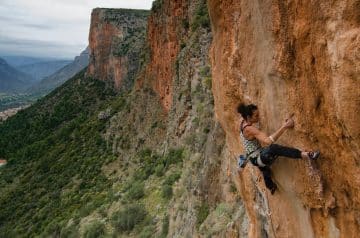
But the hardest part of heel-hook and toe-hook technique isn’t necessarily placing your foot… it’s getting it out!
Releasing Heel-Hooks and Toe-Hooks
The hardest part about incorporating heel-hooks and toe-hooks into your climbing, however, isn’t actually using them. It’s moving on from them! Both heels and toes hold you into the wall; releasing them means releasing that tension in a big way. If you aren’t careful, get ready to barn-door your way into oblivion.
Before releasing either a toe or heel hook, brace yourself with your core. Control the impending swing with strong abdominal activation. Prepare to take the weight that your foot was holding back into your hands and your other leg. This means ensuring that your hands and secondary foot are stable enough to absorb that weight before releasing the hook. Think ahead to your next body position as well. Once your toe or heel leaves the hold, where do you need it to go next? Create an action plan to get it into position as quickly and directly as possible. Use the foot’s momentum to your advantage. Follow the arc of its movement to the next viable hold where it can land.
With the right technique for getting in (and out) of position, climbers can reap the full benefits of their shoe rubber. Use your heels and toes like the third hand you wish you had!
Related Articles:
- Climbing Shoes for Every Type of Terrain
- Shorty Beta: Hacks for Short Climbers to Maximize Their Reach
- Tall Beta: Hacks for Tall Climbers to Make the Most of Their Height
- Steep Route Techniques to Climb Harder
- The Climbing Technique and Mastery of Jonathan Siegrist
Copyright © 2000–2023 Lucie Hanes & Eric J. Hörst | All Rights Reserved.

